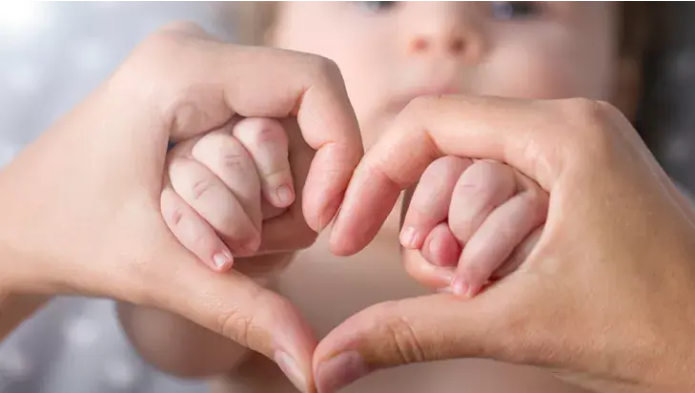
What Is Ablepharon-Macrostomia Syndrome?
Ablepharon-Macrostomia Syndrome (AMS) – What is it?
An Uncommon Hereditary Disorder Involving the Formation of the Skull Face and Limbs
Ablepharon-Macrostomia Syndrome (AMS) is an uncommon developmental disorder that primarily involves the craniofacial (head and face) region, skin, fingers, and genitals. It is a birth disorder as well, but is also accompanied by limited language development and, in some instances, intellectual disability.
Salient Features of Ablepharon-Macrostomia Syndrome
Craniofacial Abnormalities
Facial features. The face of a child with AMS may be characterised by:
- Ablepharon or Microblepharon: Absence of upper and lower eyelids, fully or partially.
- Macrostomia: A broad mouth like a fish, from failure of the lips to join.
- Lack of eyelashes and eyebrows
- Small or low-placed ears
- Triangular countenance, smallness of the nose, disease of the nostrils
- Without zygomatic arches (cheekbones)
These anomalies can be associated with dry/irritated eyes secondary to a lack of eyelid coverage.
Additional Physical Symptoms
Skin and Hair
- Loose, thin, crepey skin with laxity or creasing of the neck, butt, knees and feet
- Reduction of hair (thin or late appearance of hair with frequent absence of lanugo or less hair than same-aged peers)
- Dry, coarse skin texture (cutis laxa-like)
Hands and Fingers
- Fingers are attached (syndactyly)
- Finger contractures, or fingers that are bent (camptodactyly)
- Tight or too much skin causes restricted movement of the finger
Genital Abnormalities
- Ambiguous genitalia
- Small penis or testicles ridges (cryptorchidism)
- Sparse or underdeveloped nipples
- Ventral hernias (protruding contents from the abdomen)
Developmental Challenges
- Delayed language development
- Mild to moderate intellectual disability in some instances
- Hearing loss
- Growth retardation
Yet, some patients exhibit normal intelligence, and developmental retardation can be diverse.
Aetiology and Genetic Inheritance
The pathogenesis of AMS is not yet clearly understood. Scientists suspect that it is passed down in one of the following ways:
- Autosomal Recessive: Each parent has one copy of the faulty gene, but they typically don’t have any symptoms. There is a 25 per cent chance the child will be affected.
- Autosomal Dominant with Variable Expression: One mutated copy of the gene in each cell causes the syndrome. Symptoms can be mild to severe.
More genetic work is needed to identify the precise gene(s) at work.
Related Disorders (Differential Diagnosis)
Barber-Say Syndrome (BSS)
Barber-Say Syndrome has similar characteristics to AMS, which include macrostomia, hypoplastic ears, redundant skin, and absent or hypoplastic nipples. Some scientists think the same gene might cause both disorders.
Several other diseases have similar symptoms:
- Ectropion of eyelids
- Ocular hypertelorism
- Facial or limb anomalies with other congenital syndromes
Diagnosis
It is diagnosed at birth using:
- Clinical evaluation
- CT scans (looking for skull and facial bone deformities)
- Eye and eyelid malformations (ophthalmologic exam)
- Genetic testing may be suggested to help confirm the diagnosis and to understand inheritance patterns
Treatment Options
There is no cure for AMS. Therapy is symptomatic and supportive and, since patients are generally seriously ill, a multi-disciplinary approach is necessary for care, including:
- Paediatricians
- Ophthalmologists
- Dermatologists
- Plastic and reconstructive surgeons
- Urologists and gastroenterologists
- Physical and occupational therapists
Common Treatments Include:
- Artificial tears or eye drops for cornea protection
- Plastic and reconstructive surgery: eyes, lips, ears, genitals, and hernias
- Therapeutic and early intervention for developmental lags
- Genetic counselling for families
Living With Ablepharon-Macrostomia Syndrome
Having a rare genetic disorder can also be tough. Resources and support are critical for those affected and their families.
Recommended Resources:
- National Organisation for Rare Disorders (NORD)
- The Monarch Initiative
- OMIM: Online Mendelian Inheritance in Man
- Genetic counselling resources (through ACMG or NSGC)
- PubMed and Orphanet for medical literature search and research
Research and Optimism for the Future
Current genetics studies, like the Human Genome Project, hold the potential for unravelling the reasons rare conditions like AMS ever happen. The prospect of more effective treatment or prevention in the future through further advances in genetic science.
Final Thoughts
Ablepharon-Macrostomia Syndrome is a constellation of complex symptoms seen in very few children that demand lifelong care and a multi-disciplinary treatment program. While the disorder comes with many challenges, early detection, supportive care, and progress in medical genetics can greatly enhance patients’ quality of life.
Learn More & Health Tips: Health Care Tips Hub






